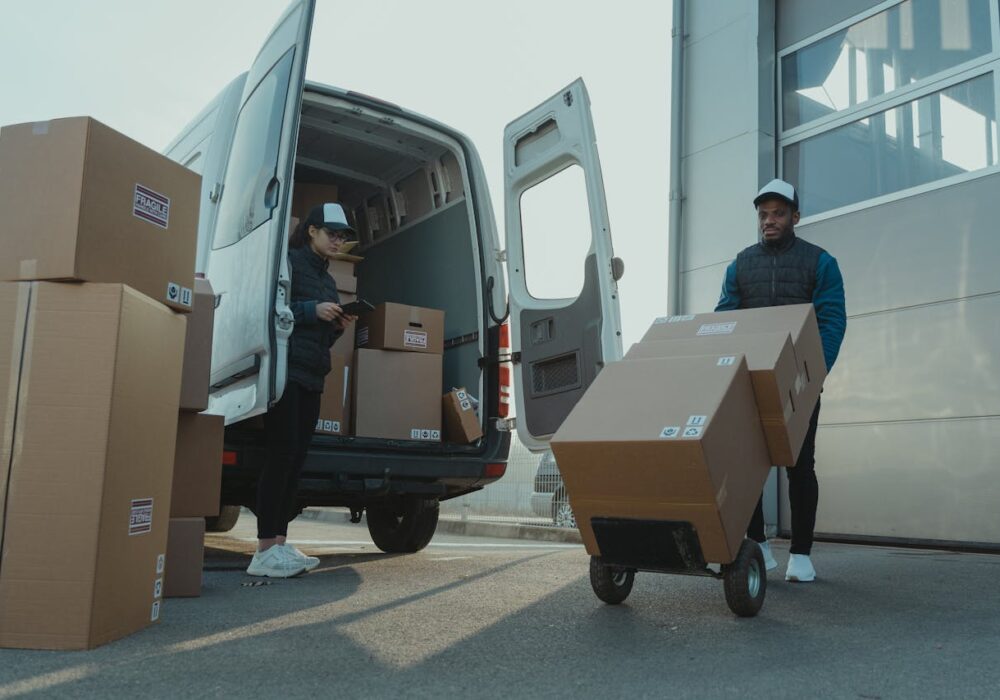Knowing how to acquire, nurture, and convert leads is the bloodline of every business. Digital marketing is one of the best ways to manage this funnel, as it’s innovative, measurable, and usually scalable.
For example, in a SaaS company, you want to turn a visitor into a subscriber, then a customer, and finally — and ideally — a loyal fan. When you use digital marketing strategies like email campaigns, videos, blogs, or webinars, you get access to data that reveals what works and what doesn’t.
Webinars and email are, independently, two of the strongest lead-generation channels available to digital marketers. Together, they form a virtual powerhouse, offering incentives, engagement, and ongoing value to nurture and convert leads.
In this article, I’ll go over how you can utilize webinars to attract leads and capture emails, which you can then use in drip campaigns and subsequent events to nurture and convert.
Most marketers map leads on a three-stage sales funnel composed of awareness, consideration, and decision stages.
Prospects are problem-aware and trying to learn more about their current pain points. They might already know they need a product or outside help to solve the problem, or they may just know they have a problem.
Prospects understand the problem and what types of service might be a good solution. They’re more solution-aware, and prepared to do plenty of research to find the best option.
Prospects have chosen a solution and now have to choose a brand. They’re product-aware, and are mostly comparing options at this stage.
Mapping leads in this funnel should also involve how long it takes prospects to move through each stage, if they go through any substages, and the motivations they need to move from one stage to the next.
Understanding which stage your customers are at allows you to:
This is important when you start generating leads, because you have to decide where in the funnel to start.
The first step for most leads in a new funnel is awareness, or the top-of-funnel stage.
These leads are easy to generate, but won’t mean much for your bottom line unless you optimize the rest of your funnel to convert them. Common top-of-funnel acquisition channels include SEO (such as blog posts), partner referrals, affiliate programs, ads, and social media.
Content that works here:
Once you get awareness, next comes consideration. Here, we’re in the middle-of-funnel stage.
Mid-funnel leads may have already made contact with you or know about your brand or service, and need to be nurtured. This can be someone who found you via a blog and then signed up for your newsletter or a customer of a co-marketing partner of yours who signed up for a joint webinar you’re running together.
Content that works here:
Finally, and this is the goal of every funnel, you get the decision stage. This is the bottom of the funnel, where leads make a choice about whether to sign up for your product or not.
Bottom-funnel leads are those ready to convert and are at the last step before taking action. These leads can be ones you’ve nurtured all the way to their current stage, or leads you were able to acquire just as they were ready to purchase. They have a fast payoff, but are harder to land.
Content that works here:
According to HubSpot, webinars and emails are great options for prospects in the consideration stage, but you can easily apply these tactics to any stage by adjusting your content. They also create a cycle where webinars generate more newsletter sign-ups, and you then share and promote your webinars in your email newsletter.
Webinars are an excellent opportunity to partner with industry-adjacent companies to drive leads into your pipeline, grow your email list, and offer value to your followers.
Webinars are video casts that require registration in order to attend. They’re usually offered for free in exchange for registration information, but some webinars have a ticket price. To put on a webinar, you need to organize and schedule it, promote it, and then run the event live.
There are many business benefits to hosting webinars. In addition to gaining leads, organizations can record and save the replays to be repurposed for future marketing, driving value over the long term. Tools like Demio allow you to run webinars with live chat, save those videos, and ultimately automate webinars for lead generation, engagement, and partnership efforts.
While webinars can have different impacts depending on your company, industry, and content quality, most organizations see considerable value from them. Adobe Connect reports a 51% conversion rate between visitors to its webinar landing page and people viewing the webinar. This breaks down to 36% in live views, and 54% in long-term views of recordings. Adobe Connect also reports that 19% of live views (9.6% of total registrants) signed up to view a product demo after the webinar.
You likely know your target audience, but webinars can hyper-focus within that segment. Webinars are your opportunity to make your audience feel as if you’re speaking directly to them, addressing a topic or question they were just thinking of the other day.
Ask yourself:
Answering these questions can help you build webinars that meet the needs of your audience. It’s not enough just to pick a topic — you need to know how that topic connects with your audience, and vice versa. Building buyer personas is the easiest way to get there.
Deciding a webinar topic normally entails assessing and reviewing your audience, goals, and funnel. It also means figuring out how the topic ties into your overarching campaign and strategy. This is especially important if you’re tying webinars to an email campaign, because you have to deliver a single, cohesive message for the strategy to work.
Your topic must:
Here are a few suggestions for your webinar. You don’t need to include everything, but the best webinars have multiple components from this list:
In general, webinars should not be advertisements for your product. The only exception is when your webinar is meant to tell people how to use your product, such as a product demo, or to make a sale, where you would make it clear at the onset that it’s a sales-focused webinar.
Promotion is critical to any event. However, posting about your event once or twice isn’t enough. You need to create a full-suite webinar marketing strategy that covers every touchpoint you can reach.
Some of the ways you can share your webinar include:
Here, timing can be crucial. If someone finds out about an event two days in advance and doesn’t have time in their schedule, you lose a potential lead. Give at least two weeks’ initial notice for new webinars, and include the webinar date and time in all your promotions.
Another way you can promote your webinar is by tapping into a co-marketing partner’s network. When you get another brand to join your webinar, you get access to their promotion channels, too.
Plus, it’s always a good idea to leverage industry knowledge by working with guests and other businesses.
Guest speakers, industry experts, and other partners allow you to:
Joint webinars, panels, and interviews allow you to deliver value to your webinar viewers, while taking the focus off your own products. You can also offer a guest post exchange where you promote the webinar in a guest post on each others’ blogs.
Prospects won’t come back for another webinar if you don’t deliver real value in the first. That means focusing on thought leadership, industry knowledge, and valuable information over self-promotion.
Gary Vaynerchuk advises delivering at least three items that are pure value for the customer before you ever introduce self-promotion.
If you build it, they will come. But how long will they stay? Integrating your webinar and email strategy allows you to retain, nurture, and convert leads. This means following up with more useful information via email, and inviting users to other webinars.
Even if you require email registration to view a webinar, it’s not enough to qualify a lead. To increase your chances of lead qualification, you can offer relevant fact sheets, follow-up consultations, whitepapers, case studies, or a copy of the slides. Once someone downloads those additional resources, you’ll know they were interested in your webinar content and want more.
You can also provide additional value by leveraging old content. You likely have a bank of emails, webinars, and other relevant media you can offer on demand. This allows you to maintain a longer cycle of email contact and relationship building while delivering value every time you contact the lead.
Once someone finishes a webinar, it’s important to follow up with them. Make sure you send a “Thank you for watching” email, slides, or other resources to the prospect.
Email is a powerful tool for nurturing leads, and it can help you deliver new information, answer relevant questions, and invite leads to additional webinars. Eventually, email marketing can also convert with sales, discounts, and offers.
Be sure to use segmented lists for this — If someone signs up for one thing, make sure all the emails they receive are about that item. Most importantly, get the basics right. There’s no point in spending money on a long-term campaign to generate leads if you don’t have systems in place to engage, nurture, and convert them with timely and high-quality emails.
If you don’t track leads, emails, and conversion, you have no idea how your funnel is doing. Tools like timetoreply allow you to track email analytics including response times, conversion, engagement rate, and more. It also has features to qualify leads from email, webforms, and more.
Let’s Say Green for You is a B2B organization offering turnkey solar wind, solar, and geothermal installations for businesses looking to reduce their carbon footprint and go green.
A buyer persona profile would look like this:
You would then build a webinar plan around those needs. Below, we’ll discuss one overarching topic with a few subtopics you can include in a webinar series.
This example uses just three steps, but chances are, you’ll need more to convert a customer for something high-value like solar panels. The higher the cost of the product, the more you’ll have to work first on building relationships, then sales.
Even with these three steps, you can easily see that someone who moves from Step 1 to Step 3 has become a market-qualified lead. This person isn’t just interested in potentially offsetting carbon with solar panels; they’re actively looking at costs and how to save on installation.
Email and webinars are a great combination. Webinars draw in leads, and emails help you convert them. Once you have an email list, your newsletter can also drive traffic to the webinar while the webinar drives new people to the newsletter in a continuous cycle. It’s important to have a robust campaign strategy for this kind of marketing to succeed. But when it does, the combination can deliver considerable engagement while driving prospects down your funnel.
About the Author
Rachel Andrea Go is a content strategist and inbound marketer on the Demio content team. Demio is a no-download webinar platform that provides a seamless experience and full marketing suite to generate more leads and engagement from your events. With easy branding features and browser-based technology, Demio provides everything you need to grow your business with webinars.



Trusted by high-performing inbound sales teams and customer-facing teams globally.
Close more deals and delight more customers with the faster, smarter, deeper email analytics and performance optimization software that works straight from your team’s inbox.